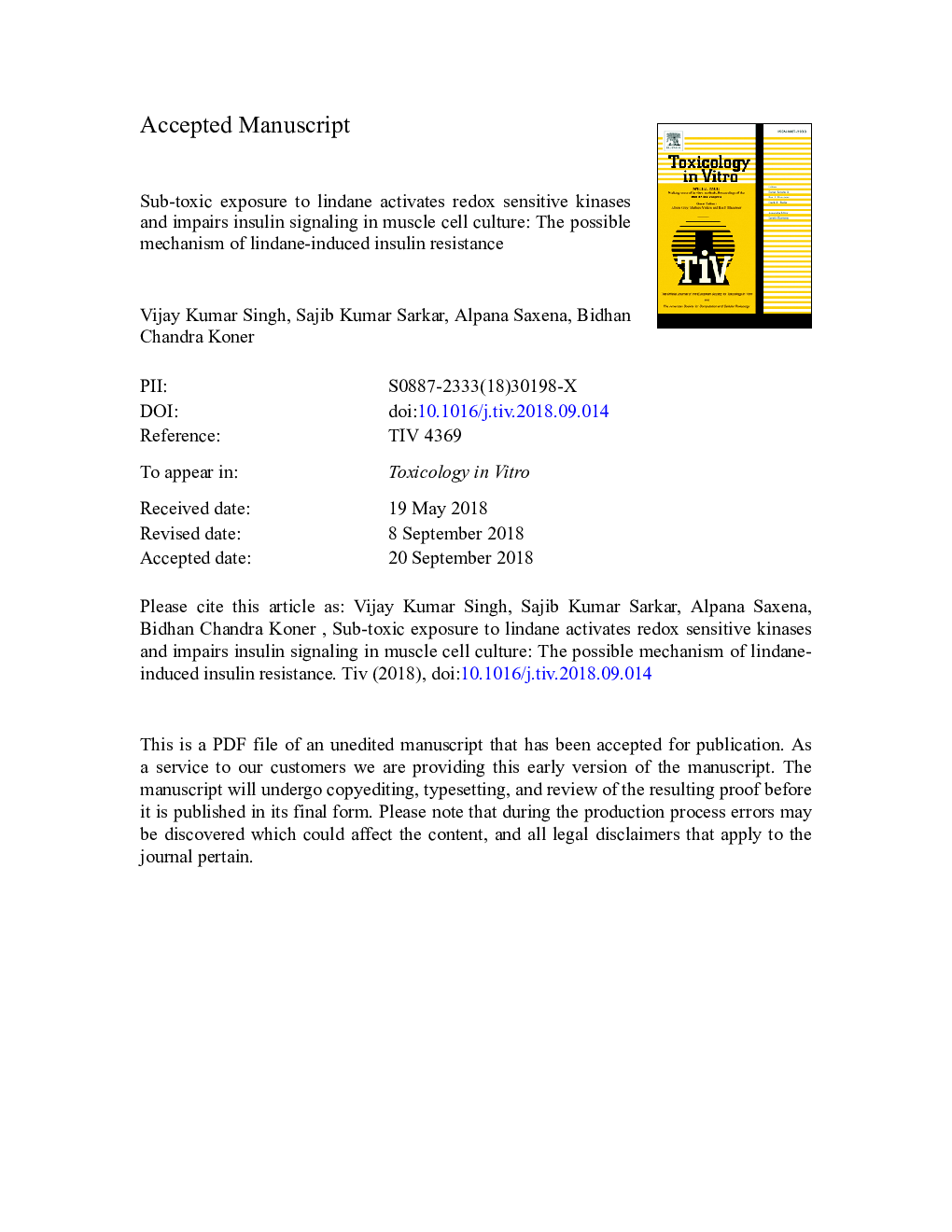| Article ID | Journal | Published Year | Pages | File Type |
|---|---|---|---|---|
| 11025649 | Toxicology in Vitro | 2019 | 23 Pages |
Abstract
Lindane exposure is claimed to be involved in pathogenesis of type 2 diabetes mellitus (T2DM) and insulin resistance state by an as yet unknown mechanism. The redox sensitive kinases (RSKs) and heat shock proteins (HSPs) interfere with insulin signaling and induce insulin resistance. The present study was designed to explore the mechanism of insulin resistance induced by sub-toxic lindane exposure. In an in vitro study, exposure to 60â¯mg/L and 120â¯mg/L of lindane for 18â¯h on rat L6 myoblasts derived myotubes significantly increased malondialdehyde level & superoxide dismutase activity, decreased total antioxidant level and insulin-induced glucose uptake in a dose dependent manner. The extent of activation of RSKs and HSP25 as measured by western blot from the extent of phosphorylation of IκBα, p38 MAPK, JNK & HSP25 in lindane-exposed myotubes was higher. HSP70 was induced and insulin signaling as measured from tyrosine phosphorylation of insulin receptor (IR) & insulin receptor substrate-1 (IRS-1) and serine phosphorylation of Akt was attenuated in comparison to those in untreated myotubes. We conclude that sub-toxic lindane exposure induces oxidative stress, activates RSKs & HSP25 and induces HSP25. These in turn, impair insulin signaling to impart insulin resistance in myotubes induced by sub-toxic lindane exposure.
Related Topics
Life Sciences
Environmental Science
Health, Toxicology and Mutagenesis
Authors
Vijay Kumar Singh, Sajib Kumar Sarkar, Alpana Saxena, Bidhan Chandra Koner,
